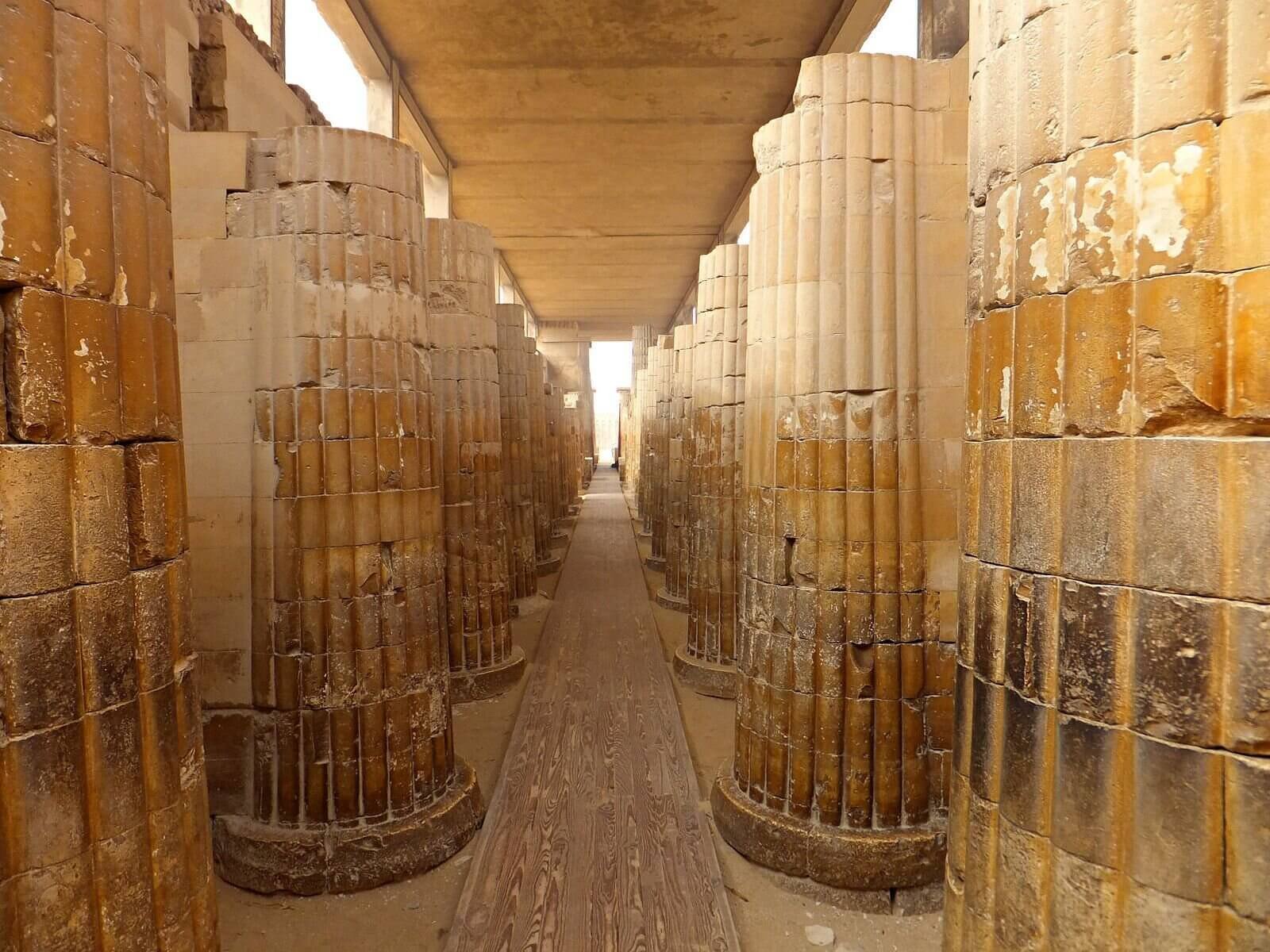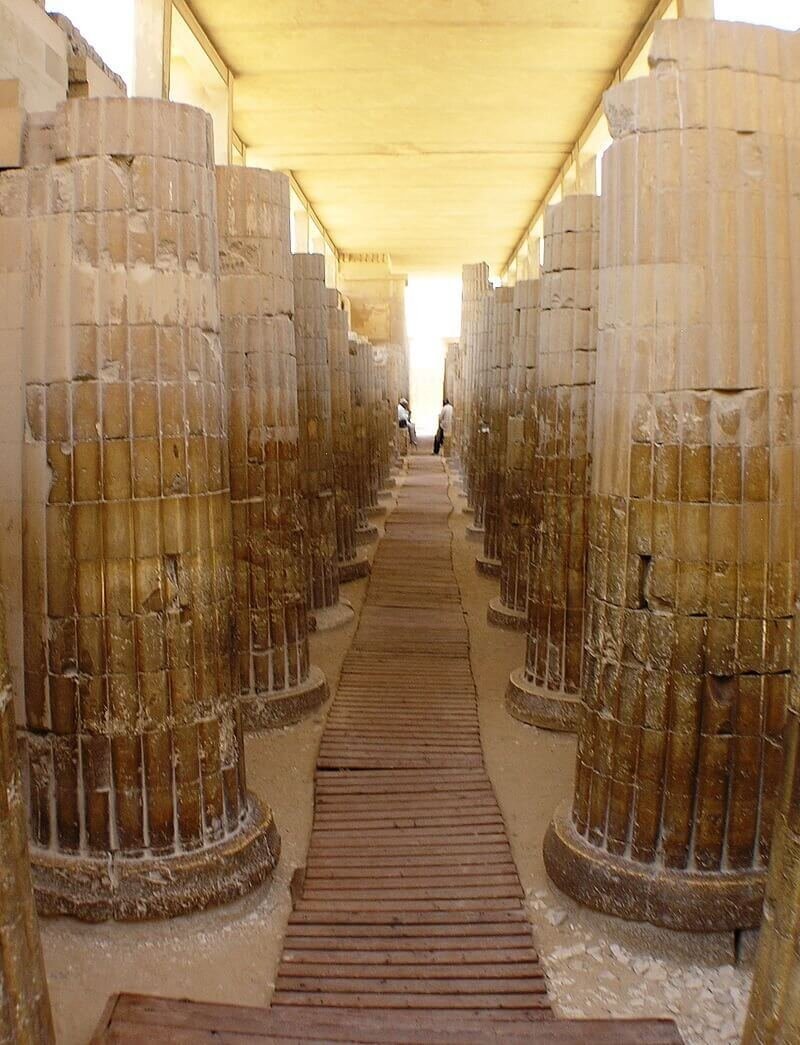One theory about the origins of the Doric order contends that Egyptian architecture had an influence. Greek traders may have drawn inspiration from the monumental structures they came across, such as the colonnade entrance of the Djoser Complex, which resembles later Doric columns in Greece, given that they were present in Egypt as early as the 7th century BC.
Introduction: Cross-Cultural Inspirations
The architectural achievements of ancient civilizations are often seen as isolated marvels, but historical interactions across the Mediterranean likely sparked inspiration between different cultures. One compelling theory is the connection between Egyptian architecture, specifically the structures of the Djoser Complex, and the development of the Greek Doric order in temple construction. With Greek traders and settlers present in Egypt as early as the 7th century BC, it is plausible that they encountered and were influenced by the majestic stonework of Egyptian temples and complexes. This article explores the possibility that the colonnade entrance of Djoser's funerary complex may have inspired key elements of the Doric order in Greek temples.
The Djoser Complex: A Revolutionary Architectural Feat
Constructed around the dawn of Egypt’s 3rd Dynasty, the Djoser Complex is a marvel of early Egyptian architecture, designed by the brilliant architect and later-deified figure Imhotep. This funerary complex marked a shift in architectural techniques, moving from traditional mud-brick structures to stone construction. Imhotep’s ability to translate the delicate and impermanent materials of early Egyptian architecture—like reeds and wood—into lasting stone monuments signaled a revolutionary leap forward in building techniques.
One of the most significant innovations within the complex is its vast size. The enclosure surrounding the complex stretches 600 yards (549 meters) long and 300 yards (274 meters) wide, rising over 30 feet (9.1 meters). This immense structure, composed of smaller stone blocks rather than large limestone slabs like those found in later pyramids, demonstrates the early experiments in stone construction. This wall was more than just a boundary; it represented a monumental feat of engineering and design, showcasing the ambition of Egypt’s builders.
The Enclosure Wall: Massive and Majestic
The enclosure wall is one of the earliest examples of large-scale stone construction. Unlike the simple mud-brick walls of earlier periods, the stones used here were small and brick-like, allowing for precision and intricacy in construction. The structure boasted 15 doorways, of which only one—on the eastern side—was a true entrance. The rest were false doors, symbolically significant in Egyptian religious architecture as portals between the physical and spiritual realms.
Entrance Colonnade: Reeds, Columns, and Ancient Ingenuity
The entrance colonnade, a striking feature of the Djoser Complex, comprised 20 pairs of engaged columns, reminiscent of bundled reeds or palm ribs—a direct nod to Egypt’s architectural roots in natural materials. These columns line a corridor leading into the complex, with 24 small chambers thought to represent the nomes, or districts, of Upper and Lower Egypt. These chambers may have once contained statues of the king or deities, adding to the sacred atmosphere of the structure.
The roof of the colonnade was designed to resemble tree trunks, emphasizing the imitation of organic forms in stone—a hallmark of Imhotep’s genius. While the columns provided visual support, they were not trusted structurally, as evidenced by their attachment to side walls. This hesitation reveals the transitional nature of Egyptian architecture, as builders adapted their methods from mud-brick to stone.




Engaged Columns: Structural and Symbolic Beauty
One of the most remarkable features of the colonnade is its use of engaged columns, which are not free-standing but connected to a wall. Unlike later pilasters, where columns are merely decorative, the side walls in the Djoser Complex project outward, creating bays between each set of columns. These columns, with their circular design carved to resemble papyrus bundles, reveal a blend of aesthetic and symbolic elements. The papyrus motif was not merely decorative; it was steeped in symbolic meaning, representing growth, life, and creation in Egyptian culture.
The precise, smooth joints of the stone blocks further highlight the craftsmanship involved. Imhotep’s architectural vision ensured that these early stone structures would endure, preserving the complex’s grandeur for millennia.
The Greek Doric Order: Origins and Evolution
The Greek Doric order, one of the three canonical orders of ancient architecture, is characterized by its simplicity and strength. The columns, with their smooth or fluted shafts, circular capitals, and lack of a base, are a defining feature of Greek temples from the Archaic period onward. Doric columns rest directly on the stylobate, the platform on which the temple is built, emphasizing their sturdy, grounded appearance.
The Doric order’s origins are still debated among scholars. One theory posits that it developed from early wooden prototypes, while another suggests Mycenaean architecture as its inspiration. However, the possibility that the Doric order drew inspiration from Egypt, particularly the monumental stone structures like those found in the Djoser Complex, adds a new dimension to our understanding of cross-cultural exchanges in the ancient world.
Theories of Doric Influence: From Egypt to Greece
The theory that Greek traders encountered Egyptian architectural forms during their visits to the Nile is a plausible one. By the 7th century BC, Greeks were actively trading and establishing colonies in the eastern Mediterranean, and Egypt’s monumental architecture would have been hard to ignore. The use of stone in Egyptian temples, particularly the colonnaded halls with their towering engaged columns, may have left a lasting impression on Greek builders.
The resemblance between the Djoser Complex’s colonnade and early Greek Doric columns is notable. Both feature simple, strong columns with circular capitals, and both emphasize the importance of structure and form over decoration. Although the Greek Doric order evolved to include more refined details, the basic architectural language may have originated from encounters with Egyptian stonework.
A Shared Architectural Heritage
The architectural styles of Egypt and Greece, though distinct, share certain fundamental qualities, particularly in their use of columns and stone construction. The Djoser Complex, with its innovative colonnade entrance and massive enclosure walls, may well have influenced the development of the Greek Doric order. Whether through direct observation or a broader cultural exchange, the parallels between these two ancient civilizations remind us that architecture is a dynamic, evolving art, shaped by the interactions and inspirations of peoples across time and space.
By examining these connections, we gain a deeper appreciation for the shared heritage of Mediterranean civilizations and the architectural innovations that continue to inspire us today.













